Character Design 2B for Nier: Automata
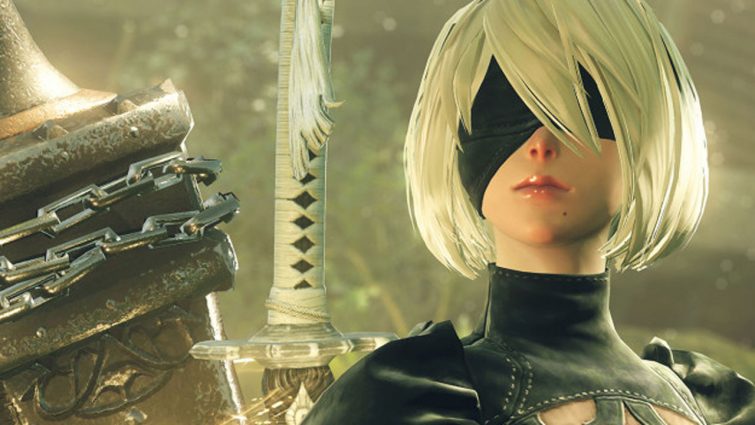
Hi, my name is Hito Matsudaira, I am character modeler for Nier: Automata.
Can you remember the famous character modellers? I can not - the creators of the characters these days rarely become famous. Fortunately, I was given such an opportunity, so I want to talk about my thoughts and how I modeled the 2B character based on sketches.
I want to show that this process is not only in the transfer of illustrations in 3D.
')
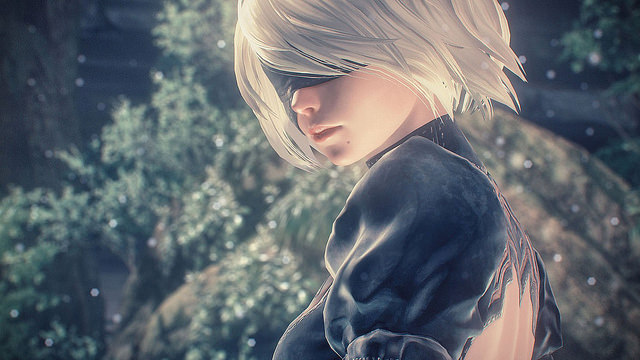
Creating a model
In general, character modeling is performed as follows:
- Creating a rough model to have an idea of the finished form and the final image
- High-quality and accurate modeling
- Implementation in the assembly of the model that will be used in the game
First of all, I started by creating a rough model based on a draft design received from character designer Akihiko Yoshida.
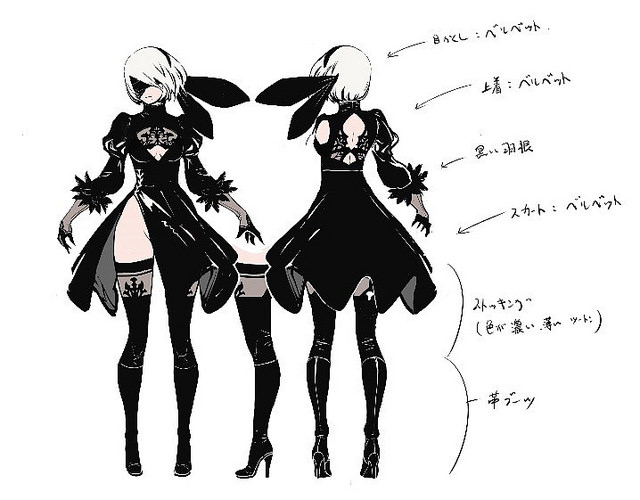
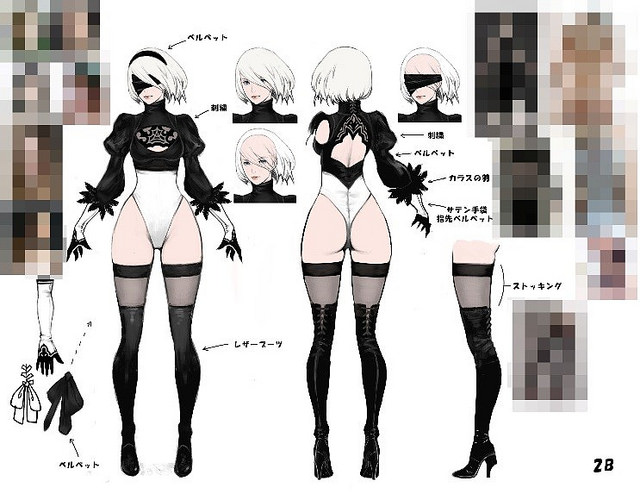
Thanks to the details hidden in the upper image, it was clear to me what style Yoshida-san tends to (do not worry, there is nothing criminal there, I just have no right to show this information). And so without even talking to him, I understood what he was trying to achieve. I like those moments.
After that, I created a rough model. This was my first job after joining the NieR: Automata team. I spent one or two weeks on this rough model.

Then our game director Yoko Taro (Yoko Taro) looked at the model and approved it. To create this model, I used many reference sources, for example, Yoshida-san's games, on which he worked in the past (the character models for Final Fantasy XII were awesome ...).
When I talk about a rough model, you might think that it is quite rough, but in fact I had to pretty much strain my brain over it.
Will this silhouette be final? Will the model cause a lot of problems for animators? How many bones will be in it and how will we manage the moving parts?
2B is also a character who was to become a symbol of the project, so I had to think about the foundation for body proportions and modeling, the design of the shader, and even the cost of mass production. And all this in the process of creating this rough model.
Nowadays, it is difficult to simplify 3D models, so it is always necessary to manage the data and take into account their possible impact on the project in the future.
The next part of the work was the most interesting: I added details on a high-quality model.

I created it in digital form, as if made from clay. I was completely absorbed by this process and I perfected the character step by step.
And finally, I implemented the character as a game model:

In short, this job is to arrange images on polygons, but the number of polygons and images increases with the release of each new generation of consoles.
The number of polygons for PS2 was only a few thousand, so only one or two types of images were needed. However, the number of polygons for PS4 is already about 100 thousand and they need eight types of images. And even more if you need detailed detailing ...
In the image below, image data is added to polygons.
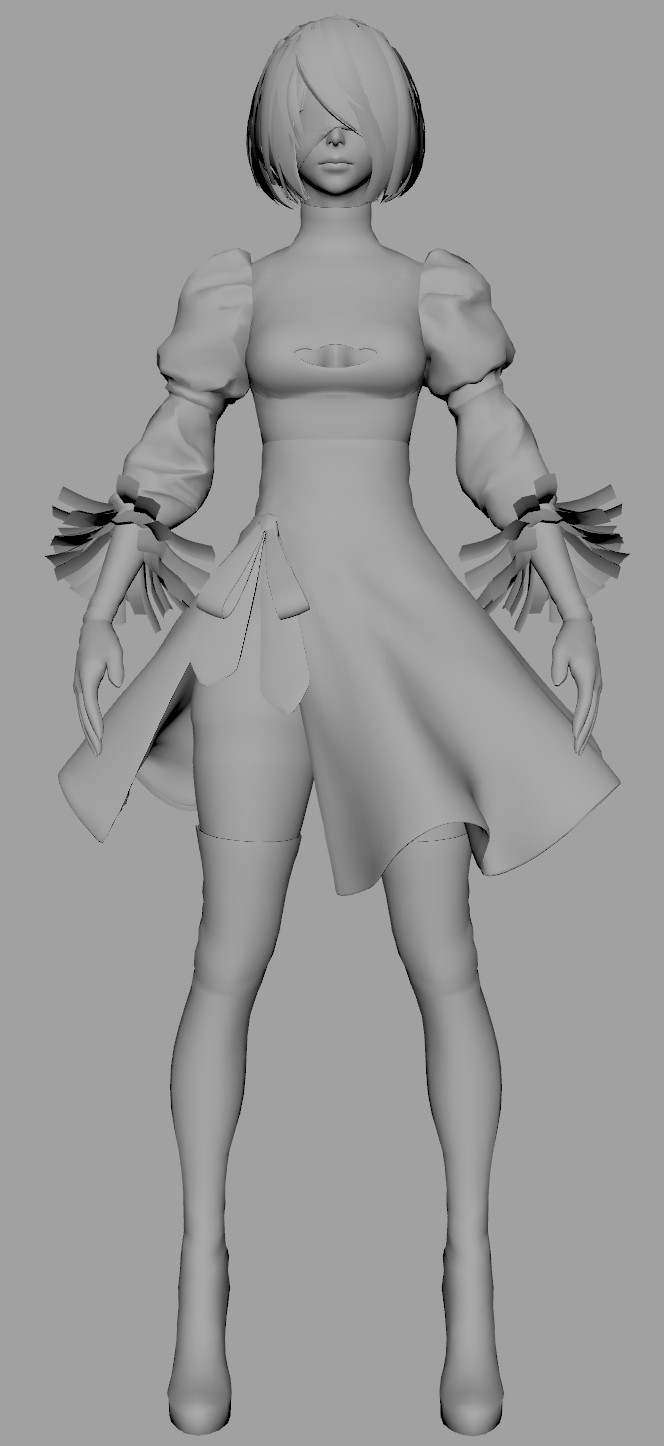
Here's how it works: I take a “raw” polygonal model → add images with information about surface contours obtained from a high-quality model → assign textures using different types of images → assign color information using images → the last step of the creative process to complete the texture of the model, and boom! - the model is ready.
In addition, there is the dark side of 3D modeling. You need to customize the appearance of the model and understand how to configure the model so that it becomes wet from the water, figure out how everything should move, and reduce the amount of data for the game so that it can work with 60fps ... but I will only remember the interesting work.
Character modeler job
I talked about what we do, but this is only that part of the process that is done by hand.
The most important task of the character modeler is to come up with an implementation of a 3D model moving in the game that does not lose the charm of the original illustration.
The difficulty here is that the charm of the illustration is lost when the character design is transferred to 3D and becomes more realistic. In addition, the image of the characters in the eyes of the players is mainly based on illustrations, so from the very beginning players may have negative feelings for the character models. And this is very unpleasant.
But while doing character modeling, I was thinking how to solve this problem.
Since the game has the previous part, my first decision was to create a model reminiscent of the fact that the two worlds Nier and Nier: Automata are connected (thanks to this we will get the forgiveness of fans of the previous game).
At first I thought about what was the charm of the model from the previous part. Having studied this question, I realized that there is a fragile beauty in it. There is a feeling that her doll form is easy to break.
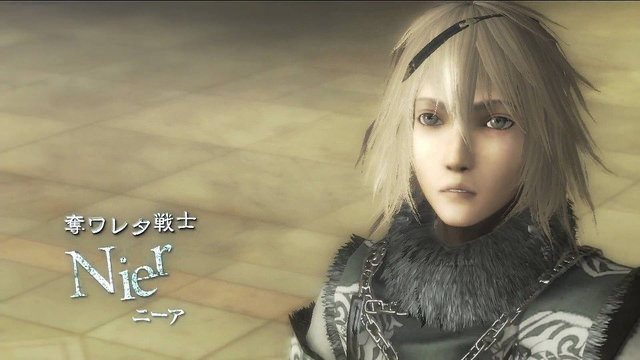
Therefore, I added strange details to the 2B models, which are not immediately noticeable. I will not disclose the details, but with this blot of strangeness the model looks much more beautiful.
My second solution was to give the 3D model its own unique charm, which can only be appreciated by changing the perspective of the camera and which cannot be achieved from a two-dimensional image.
3D-model can be viewed from any angle, its lighting and perspective may vary. Therefore, you can create a different character image that you will not see in the illustrations.
I think that way I managed to create a fairly high-quality model, right?
Total
Character models for games have a unique quality.
Since the games are interactive, it is easy to enhance the character’s charm in the player’s eyes by linking the control of the character to the memories and feelings that arise during the game. I think this is what makes modeling for games an exciting process.
What do you think? You may never have thought about this, but I was thinking a lot when creating a model.
I will be happy if 2B becomes a favorite character of all.
Bonus
This is the official design of the pattern. (Use in cosplay!)
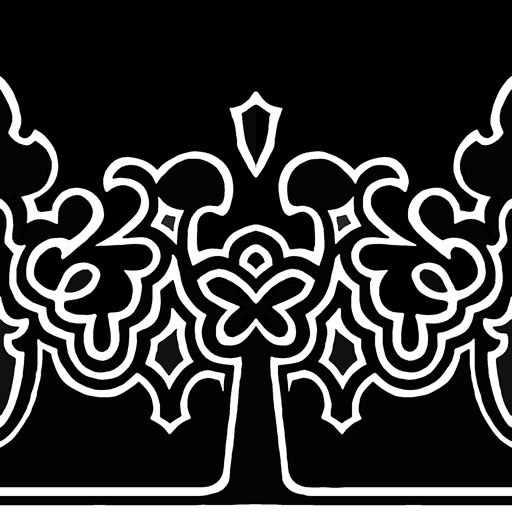
Source: https://habr.com/ru/post/325990/
All Articles